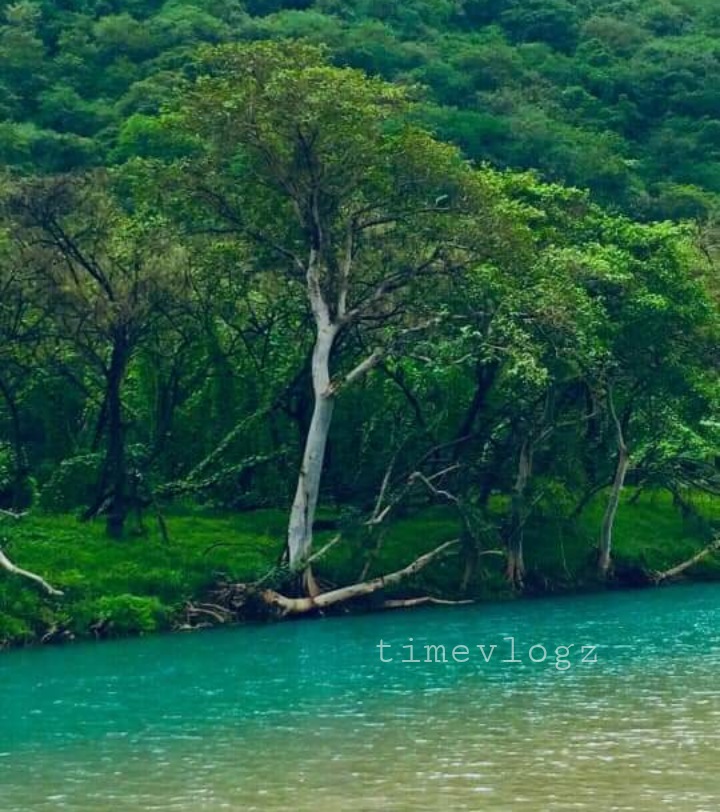how to reach oman salalah.. Salalah Located at a distance of 1000 km from Muscat, the capital of Oman, Kerala in the Gulf is blessed with scenic greenery.

Countryside fruit trees and plants, betel nut, plantain, plantain, banana, coconut, squash, papaya, vegetable fruits, fish wealth and rain is a Kerala experience. Kharif (monsoon season, spring season) is the season in Salalah. Here there is a rare terrain where fog and mountains come together to welcome us. Like many places like Ooty, Munnar and Wayanad, we Malayalis like that feeling here. such as
The holy land where many prophets died..Prophets Ayyub (A.S.), Imran (A.S.), Hudunabi (A.S.), Hudunabi (A.S.) and Saleh (S.A.S.) are resting here. Cheramanperumal, the king of Chera clan who ruled Kerala, is resting in Salalah. He would die in Salalah.
how to reach oman salalah Muscat to Salalah distance flight

There are many things to see and tell.
There are curiosities here like houses made of clay, art forms etc.
There is a magnetic point here which miraculously switches off any vehicle loaded with heavy objects due to magnetic effect and climbs forward.

Get to know Salalah
Between the Dhofar Mountains and the Arabian Sea in the Sultanate of Oman, Salalah is a Kerala-like place between Sahayan and the sea. The second largest city in Oman. Apart from Arabs, there are a lot of Pattanis, Bengalis wearing lungis and Malayalis who are global citizens. Prominent among the locals are the 25,000-strong adivasi group called the Jabalis, who speak an indigenous language called Jabali. Salalah is also the birthplace of Sultan Qaboos bin Said, the King of Oman. There are also limitations in getting tourist information as tourism is not a major source of income for them.

how to reach oman salalah Muscat to Salalah distance flight
Kharif is the monsoon rainy season
————————————-
Yemen and Salalah are the places that receive monsoon rains in the Arab region. The monsoon season called “Kharif” is from July to September every year. “Kharif” means autumn in Arabic. During this time, Salalah becomes green and beautiful. Salala’s farming community, dominated by the Malayalis, will grow gold in Salala’s soil with all kinds of agricultural crops. The world will reach Salalah with rain showers. If you leave for Salalah at the wrong time, disappointment will result.
Sights and curiosities
————————
Salalah’s history as a trading center and port predates the recorded history of global trade. Two ancient trade areas, Al Baleed and Khor Rori (Zumhurum), have been excavated and preserved for historians.
Salalah has amazing natural wonders like the “sink hole” where the earth split open, the amazing fountain at Mugsail Beach where the sea sinks itself into the earth, the “anti gravity road” illusion, the amazing mountains and galaxies of Hasiki!

Forests and mountains that sprout during the monsoons and then burn away. Dams and streams filled abundantly with rainwater, small and big waterfalls, agricultural fields and other heart-warming delights!
Frankincense
—————————
Salalah’s soil is a treasure trove of trees of various qualities that produce the “Kuntirikam” stain that has spread fragrance throughout the world since time immemorial. It is this fragrance that used to attract traders here. Today, showrooms and gardens of these trees and spearmints await visitors in Salalah.
Wadi Darbat (Valley of Darbat)
“”””””””””””””””””””””””””””””””””””
“Wadi” and “Ayn” are two words that we are going to say from time to time. Understand ‘Wadi’ as “valley” and ‘Ayn’ as “springs”.
We have started the journey. From Taqa, a beach in Dhofar region, on the road to Tawi Attir, turn left to go to Wadi Darbat. It is about an hour’s drive from the farmhouse.
Shaukat drives through the vast Dhofar mountains, twisting and turning. Rubeesh is now describing the place we are going to see for the first time in Salalah.
“Wadi Darbat” is the heartiest and widest valley in Salalah. Even a journey through these mountains inspires our minds to overcome adversity and live with iniumi.
Our vehicle is going down the mountain to Wadi Darbat through the heart-warming drizzle. Passing through the valley between two mountains, nature enriches the heart with meadows and small hills on both sides. It was even more beautiful when small fences were added on both sides of the road where the rain water was standing.
Although many parking areas have been prepared, it is difficult to get parking as it is Kharif season. As suggested by Rubeesh, Shaukat stopped the car at a parking lot about a kilometer before the main stream.
warning
———-
Yatra and valley are visually beautiful, but if we are not careful, there are two problematic creatures waiting for us here. Flies and snails are small in size.
The valleys of Salalah are home to three species of bloodsucking flies. Black fly (Haematobia minuta), Kieszet (Musca Crassirostris) and arnut (Forcipomyia Whitcobei) are the fly predators. We have stocked insect repellent creams for babies and adults from Dubai itself. For those who come here without it, Bonkalis sell local cream in the box stores of the municipality. No Mala shampoo that we buy from local shops while traveling? One of that size can be bought for 200 Baisa (Rs. 35). If it doesn’t (and sometimes it does), a deadly fly infestation is guaranteed. Their bite will start to itch. Some people get a tattoo of discomfort that lasts for months. Don’t be sad if you keep them because they are disease carriers and they graze on camels and cows and quench their thirst at nights when they are not for humans.
Next are the parasitic parasites that live in freshwater snails. Oman’s freshwater sources have had some success in controlling them, but municipal warning boards have been put up to signal that they are not completely safe. Although they may look good, do not stop to play or bathe in such streams. Snail fever (Schistosomiasis or Bilharziasis) which they can spread is a fatal disease capable of causing far-reaching consequences in children and adults.
It is best not to take such warnings lightly and ignore them while travelling. Do not carry diseases with good memories!
Rain to rain
———–
Rain is nothing new to Malayali. But the drizzle in Salalah is a good experience. As many flies as raindrops flew over the carriage as it alighted. Precautions are good. But we didn’t have the courage to bring one-year-old Govind into this trap. Sridevi, who was with him as a helper, had to stay inside the car with him.
We gathered under a big Khaf tree right next to where we got off. From there, the entire vast valley is visible. From there slowly walk downhill and you will slip if you are not careful. Take care of the small slopes and make sure your feet are firm. The eyes and the mind fly to the vast nature from the middle of the lawn spread across a large field. We even have our native medicinal plant called “Ummum” blooming here and there to remind us of Kerala. The only area in Salalah where this irrigation is present throughout the year is in Wadi Darbat.
There is a small stream at one end of the valley. If you cross it and climb to the other side, there is a steep mountain. Climb back as far as you can climb the hillside covered with large ghaf trees, jaggery and other small trees.
A further walk through this natural meadow leads to a slightly wider stream. When we look from here, it seems like another Kerala is calling us.
Caves
———
A little above the banks of the stream there are small and big caves. It is not certain whether these formed spontaneously in large rocks. Even wild trees are growing miraculously on the top of the cave. We went there with the kids and took family photos.
Fishes
———–
The authorities have laid gravel here to prevent slippage in the bed of the stream. It is full of goldfish and other fish large and small. Many stand and eagerly feed them.
Tawi Ateer Sink hole
how to reach oman salalah Muscat to Salalah distance flight
“”””””””””””””””””””””””””””””””””””””””””””””””””
Earth is a storehouse of miracles?! The variety of such wonders is a great feature of Oman or Salalah itself.
Rubish took us from Wadi Darbat to show us such a wonderful sink hole. The 14 km stretch from Wadi to the sinkhole was covered with fog. There is a clean toilet and a tea shop in the car park. Walking down half a kilometer along the rain-soaked pavement, you will reach a view point secured by steps and handrails. From there you can get a rough idea of the crater. Due to the snow cover, the depth cannot be seen.how to reach oman salalah Muscat to Salalah distance flight
What are sink holes?!
—————————
Like beautiful sculptures transformed by the craftsmanship of time, the limestone ranges have been formed into craters, huge caves and hills.
There are many amazing sinkholes in the Gulf region. Scientists have many theories about how these craters formed. The locals had a misconception that sinkholes are caused by huge meteorites. But it is a scientific observation that it is formed when the large limestones (Limestone) dissolve over time or the roofs of large caves are peeled off. In any case, Salalah has the largest sinkholes in the world.
Tawi Atteer Sinkhole
how to reach oman salalah Muscat to Salalah distance flight
how to reach oman salalah Muscat to Salalah distance flight
Tawi Athir means “bird well” in Arabic. This crater has become a sanctuary for many species of birds. What is even more surprising is that there are some rare fish in it. I have read that such fresh water fish does not live anywhere else within a radius of 600 km. The crater is 211 meters deep, or half the height of the Burj Khalifa. Below that there are two pools of water where nobody disturbs them and they don’t get direct sunlight. These fish live in it.
In the past, the local people depended on these water bodies to get water during the hot season. Here is a sketch to give you an idea of its size.
Before reaching the view point, another small dirt road is clear which is an unauthorized adventure route to the other end of Tawi Attair. Since it is the rainy season, if you dare to walk beyond the set boundaries, you may fall into the slippery soil and rock and become food for the earth.
All along the path where the tree branches cool with raindrops, the limestone laughs, weeps and rages, the sculptural remains of time. Enthusiastic about the wonder of nature, the children along with them walked back enjoying the rain.
Read Also…….

